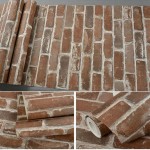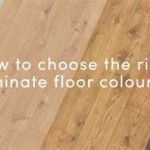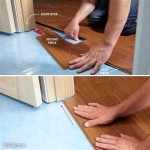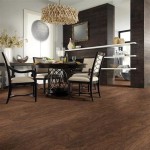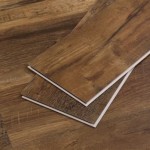Flooring for Stairs: A Comprehensive Guide to Materials, Design, and Installation
Staircases are a fundamental architectural element in multi-story buildings, serving not only a functional purpose but also contributing significantly to the overall aesthetic of a space. Selecting the appropriate flooring for stairs involves careful consideration of various factors, including durability, safety, aesthetics, budget, and ease of maintenance. Different materials offer distinct advantages and disadvantages, making the decision-making process complex. This article provides a comprehensive overview of flooring options for stairs, highlighting key considerations and offering practical advice to guide the selection process.
Durability and Wear Resistance
One of the primary considerations when selecting flooring for stairs is durability. Staircases experience a high volume of foot traffic, making them susceptible to wear and tear. The chosen material must therefore be able to withstand constant abrasion, impact, and potential moisture exposure. The ability of the material to resist scratches, dents, and fading is paramount in ensuring long-term performance and maintaining a visually appealing appearance.
Hardwood is a popular choice for stairs due to its inherent strength and resistance to wear. Different hardwood species offer varying levels of hardness, with options like oak, maple, and hickory being particularly durable. However, even the hardest hardwoods can be susceptible to scratches and dents over time, especially in high-traffic areas. Applying a durable finish, such as polyurethane, can help to protect the wood surface and extend its lifespan. Regular maintenance, including sweeping and occasional refinishing, is necessary to preserve the beauty and integrity of hardwood stairs.
Carpet offers a softer and more comfortable surface underfoot, which can be particularly desirable for families with young children or elderly individuals. However, carpet is generally less durable than hardwood and is more prone to staining, crushing, and wear. The type of carpet chosen significantly impacts its durability. Low-pile carpets made from synthetic fibers, such as nylon or polyester, tend to be more durable and stain-resistant than high-pile carpets made from natural fibers, such as wool. Regular vacuuming and professional cleaning are essential to maintain the appearance and longevity of carpeted stairs.
Laminate flooring provides a cost-effective alternative to hardwood, offering a similar aesthetic at a lower price point. Laminate is generally more resistant to scratches and dents than hardwood, due to its durable wear layer. However, laminate is not as resistant to moisture as some other flooring options and can be susceptible to warping or buckling if exposed to excessive water. Proper installation and sealing are crucial to prevent moisture damage. Laminate flooring is relatively easy to clean and maintain, requiring only regular sweeping and occasional damp mopping.
Vinyl flooring, particularly luxury vinyl plank (LVP) and luxury vinyl tile (LVT), offers excellent durability and water resistance, making it a suitable option for stairs in areas prone to moisture, such as entryways or basements. Vinyl is also relatively soft underfoot and can provide a comfortable walking surface. It is available in a wide range of styles and patterns, including realistic wood and stone looks. Vinyl flooring is easy to clean and maintain, requiring only regular sweeping and damp mopping. It is also relatively inexpensive compared to other flooring options.
Tile, including ceramic, porcelain, and natural stone, is an extremely durable and water-resistant option for stairs. Tile is resistant to scratches, dents, and stains, making it ideal for high-traffic areas. It is also available in a wide range of colors, patterns, and textures, allowing for a variety of design possibilities. However, tile can be cold and hard underfoot, which may not be desirable for some homeowners. Proper installation is crucial to ensure a level and stable surface. Tile can also be slippery, especially when wet, so it is important to choose a tile with a non-slip surface or to add treads with a non-slip texture.
Safety Considerations
Safety is a paramount concern when selecting flooring for stairs. Staircases can be hazardous, especially for children, elderly individuals, and those with mobility issues. The chosen flooring material should provide adequate traction to prevent slips and falls. Proper lighting and handrails are also essential safety features that should be incorporated into the design of any staircase.
The slip resistance of a flooring material is measured by its coefficient of friction (COF). A higher COF indicates greater slip resistance. Flooring materials with a low COF, such as polished marble or smooth tile, can be slippery, especially when wet. It is important to choose a flooring material with a COF that meets or exceeds safety standards. Texture can also improve slip resistance. Materials with a textured surface, such as textured vinyl or carpet, provide better traction than smooth surfaces.
Stair treads can be added to existing stairs to improve traction and reduce the risk of slips and falls. Stair treads are typically made of rubber, carpet, or wood and are installed on the surface of each stair. They are available in a variety of sizes, colors, and styles to complement the existing flooring. Non-slip adhesives or fasteners are used to secure the treads to the stairs.
Proper lighting is essential for stair safety. Adequate lighting illuminates the stairs and allows users to see the edges of each step, reducing the risk of missteps. Lighting should be positioned to avoid glare and shadows. Consider installing motion-sensor lights that automatically activate when someone approaches the stairs. Handrails provide support and stability, especially for those with mobility issues. Handrails should be securely mounted and easy to grip. Building codes typically specify the required height and spacing of handrails.
The nosing, or edge, of each stair can also pose a safety hazard. A rounded or beveled nosing is generally safer than a sharp or square nosing. The nosing should be clearly visible and should not extend too far beyond the riser, as this can create a tripping hazard. Contrasting colors can be used to highlight the nosing and make it more visible, especially for individuals with visual impairments.
Aesthetic and Design Considerations
The aesthetic appeal of the staircase is an important consideration for many homeowners. The flooring material should complement the overall design of the home and create a cohesive look. The color, pattern, and texture of the flooring can significantly impact the appearance of the staircase and the surrounding space.
Hardwood stairs offer a classic and elegant look that can enhance the value of a home. The natural grain and color variations of wood add warmth and character to the staircase. Hardwood stairs can be stained or painted to match the existing décor. Carpeted stairs provide a softer and more comfortable look. Carpet can also help to reduce noise and provide insulation. Carpet is available in a wide range of colors, patterns, and textures, allowing for a variety of design possibilities.
Laminate stairs offer a cost-effective way to achieve the look of hardwood or tile. Laminate is available in a variety of styles, including realistic wood and stone looks. Vinyl stairs offer a durable and water-resistant option that is available in a wide range of colors and patterns. Vinyl can be used to create a variety of different looks, from modern to traditional.
Tile stairs offer a sophisticated and durable look. Tile is available in a wide range of colors, patterns, and textures, allowing for a variety of design possibilities. Tile can be used to create a variety of different looks, from minimalist to ornate. The design of the staircase itself can also impact its aesthetic appeal. A curved staircase can create a more dramatic and elegant look, while a straight staircase can be more practical and functional.
The risers, or vertical boards, of the stairs can also be decorated to enhance the overall look. Risers can be painted, wallpapered, or tiled to add color and pattern. Decorative moldings can also be added to the risers to create a more elaborate look. Consider using a runner on carpeted stairs to protect the carpet from wear and tear. Runners are available in a variety of colors, patterns, and materials to complement the existing décor.

How To Install Vinyl Plank Flooring On Stairs In 6 Steps Inc

Staircase Makeover New Wood Floors Update The Inspired Room

What S The Best Flooring For Stairs Direct

Stair Flooring Ideas And S Bestlaminate Photo Gallery

Pin On Stairs

Staircase Carpet Ideas For Your Home Carpetright

Stair Riser Ideas To Make Your Stairs More Stylish Home Design Remodel Staircase

Pros And Cons Of Installing Vinyl Flooring On Stairs Lx Hausys

What S The Best Flooring For Stairs Direct

Stairway Makeover Swapping Carpet For Laminate The Lilypad Cottage
Related Posts

